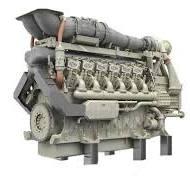
The Fascinating World of Locomotive Train Engines
Locomotive train engines have been at the heart of railway transportation for centuries, powering the movement of goods and people across vast distances. These powerful machines are not only essential for the functioning of railways but also hold a special place in the history and development of transportation.
The Evolution of Locomotive Engines
From the early steam engines that revolutionised travel in the 19th century to the modern diesel and electric locomotives that dominate rail networks today, locomotive engines have undergone significant evolution. Each type of engine has its unique characteristics and capabilities, shaping the way trains operate and providing different levels of efficiency and power.
The Anatomy of a Locomotive Engine
A typical locomotive engine consists of various components that work together to generate power and propel the train forward. These include:
- Engine or Prime Mover: This is the heart of the locomotive, responsible for converting fuel into mechanical energy.
- Generator or Alternator: Converts mechanical energy into electrical energy to power traction motors.
- Traction Motors: Drive the wheels of the locomotive by using electricity generated by the generator or alternator.
- Fuel Tank: Stores fuel such as diesel or electricity to power the engine.
- Cooling System: Prevents overheating by regulating engine temperature.
- Braking System: Enables controlled stopping and slowing down of the train.
The Role of Locomotives Today
In modern railway systems, locomotives continue to play a crucial role in transporting goods and passengers efficiently and reliably. They are used in various types of trains, from freight trains carrying heavy loads to high-speed passenger trains offering rapid transit services.
With advancements in technology, locomotive engines have become more efficient, environmentally friendly, and capable of delivering higher speeds and performance. They remain an integral part of rail operations worldwide, connecting cities, industries, and communities.
The enduring appeal and functionality of locomotive train engines ensure that they will continue to be a symbol of innovation and progress in railway transportation for years to come.
Top 5 Essential Tips for Maintaining and Operating Locomotive Train Engines
- Regularly inspect and maintain the locomotive engine for optimal performance.
- Monitor fuel levels to ensure there is enough fuel for the journey.
- Follow proper procedures for starting and stopping the locomotive engine.
- Be familiar with emergency protocols in case of engine failure or other issues.
- Ensure proper ventilation in the engine room to prevent overheating.
Regularly inspect and maintain the locomotive engine for optimal performance.
Regularly inspecting and maintaining the locomotive engine is essential to ensure optimal performance and longevity. By conducting routine checks and addressing any issues promptly, operators can prevent potential breakdowns and keep the engine running smoothly. Regular maintenance tasks such as lubrication, cleaning, and part replacements help to maximise efficiency, reduce wear and tear, and enhance the overall reliability of the locomotive engine. Prioritising regular inspections and maintenance not only improves performance but also contributes to the safety of railway operations.
Monitor fuel levels to ensure there is enough fuel for the journey.
Monitoring fuel levels is a critical tip when operating a locomotive train engine to ensure there is an adequate supply of fuel for the entire journey. By keeping a close eye on fuel levels, train operators can prevent unexpected interruptions and delays due to running out of fuel mid-route. This proactive approach helps maintain the efficiency and reliability of the locomotive, ensuring smooth and uninterrupted transportation along the railway tracks.
Follow proper procedures for starting and stopping the locomotive engine.
It is crucial to follow the correct procedures for starting and stopping a locomotive engine to ensure safe and efficient operations. Before starting the engine, it is important to conduct thorough checks and adhere to the prescribed startup sequence to prevent potential issues and ensure optimal performance. Similarly, when stopping the engine, following the recommended shutdown procedures helps maintain the longevity of the locomotive and promotes safety by preventing any unforeseen complications. By adhering to proper starting and stopping protocols, railway operators can enhance operational reliability and uphold high standards of safety in rail transportation.
Be familiar with emergency protocols in case of engine failure or other issues.
It is essential for individuals operating locomotive train engines to be familiar with emergency protocols in case of engine failure or other issues. Being prepared and knowing how to respond swiftly and effectively during unforeseen circumstances can help ensure the safety of passengers, crew members, and the surrounding environment. Understanding the necessary procedures for handling emergencies can mitigate risks and potentially prevent more significant disruptions to railway operations.
Ensure proper ventilation in the engine room to prevent overheating.
Proper ventilation in the engine room of a locomotive train engine is essential to prevent overheating and ensure optimal performance. Adequate airflow helps dissipate heat generated during operation, maintaining a safe operating temperature for the engine components. By ensuring proper ventilation, operators can minimise the risk of mechanical failures and prolong the lifespan of the locomotive engine, ultimately enhancing its efficiency and reliability during rail journeys.
